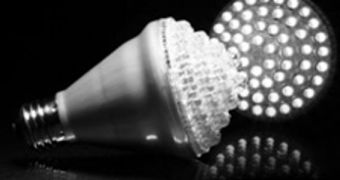Global warming represents a serious issue taken into consideration by Marvell, an eco-friendly company aiming to embrace a series of green technologies that can deliver appropriate solutions to daily challenges.
Their Footprint Zero campaign is meant to increase the people's level of awareness regarding the current role of PFC, as a vital element for sustainable lightning and refrigerators.
Also, Marvell has another ambitious target. It plans to reduce total semiconductor power consumption by 15 percent every year.
According to the enterprise, raking among the first 500 green companies in the US, PFC represents an underestimated technology with a lot of potential. In their opinion, if every tiny gadget relied on PFC, homeowners could preserve a significant amount of energy, not to mention more than satisfying financial savings.
PFC is not as innovative as some would be tempted to think, since it has been used in industrial lightning and refrigerators for more than three decades. Its initial prohibitive price made it less competitive, but throughout time experts have come up with efficient ways of decreasing its costs.
Nowadays, PFC installations are a matter of pennies, but their advantages are worth much more than that. Marvell representatives say once this element is implemented, it can generate savings of up to 50% when it comes to the amount of energy required by a certain device.
They have established that, once adopted on a large commercial scale, PFC usage would considerably improve air quality, preventing almost 24 million tons of carbon dioxide emissions from reaching the atmosphere worldwide, every year.
This green technology could improve the energy-efficiency of our electronics. If the same path is preserved, an average personal computer might end up using just 20 watts every hour, ten times less than what is currently requiring, by 2020.
The company is also aware that personal examples are very important so it started greening up its own conduct, by making its headquarters in Santa Clara, California more eco-friendly and energy-efficient.
Their operations highly depend on a computerized lighting control system, meant to use up to 60% less electricity that traditional options, fluorescent-bulb technology providing up to 40% brighter light and using up to 30% less power and premium electronic lighting ballasts that follow the same earth-friendly trend, halving energy consumption.

 14 DAY TRIAL //
14 DAY TRIAL //